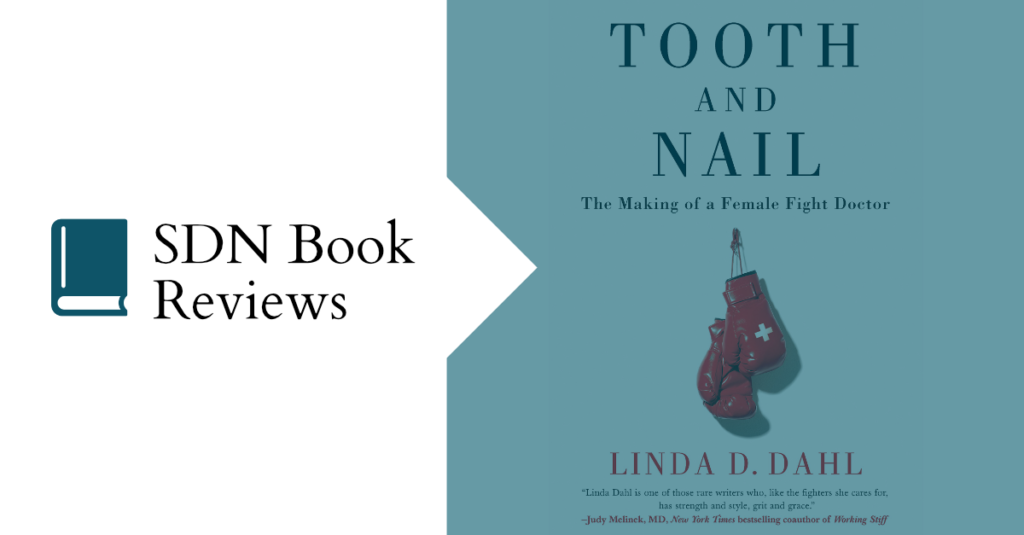By Pratiti Roy, MD Candidate, Penn State University College of Medicine
I am a first-year medical student, still trying to figure out what exactly I want to do. In an effort to leave no stone unturned, I’m trying to explore medical specialties that my classes don’t spend much time on—occupational medicine, forensic pathology, aerospace medicine. It was because of this that I picked up Tooth and Nail, Linda Dahl’s memoir of being a fight doctor at boxing matches, thinking it would give me insight into yet another uncharted area of medicine; I was surprised when I realized that this was really a book about being a woman in male-dominated areas and how Dahl dealt with that in her own life.
It’s a timely book, then, considering the #MeToo movement, which has recently been brought up in the context of the medical field, notably in a piece from the NEJM. According to this article, at my institution alone (Penn State), 50% of female medical students have experienced some form of sexual harassment from faculty or staff. In a field where program directors, deans, and department heads are still mostly men, stories like Dahl’s can help shed light on the problems female doctors face and what steps we can take to solve them.
Dahl’s book starts with her move from Minnesota to the Bronx as a surgical resident. There, she struggles to adjust to New York, resident life, and the realization that her marriage is slowly falling apart. She finds solace in watching boxing matches on TV and eventually starts to feel at home in her residency program. However, just as she starts to get comfortable, she graduates from her program and starts a new job as an attending ENT surgeon at a Tony Upper East Side practice, which brings with it new challenges. As in residency, she turns to boxing—but this time, as a doctor who assesses boxers and treats ringside injuries.
Ultimately, Dahl’s book is about being an outsider—growing up as a person of color in the Midwest, learning how to adjust as a Midwesterner in New York City, and, of course, being a woman in both the surgical and boxing worlds. The most interesting parts to read were Dahl’s internal monologues—she seemed to have internalized her “otherness” to a point where it almost paralyzed her self-esteem. In many ways, this book is almost a coming of age story, as we read about Dahl’s progression into a confident, independent surgeon.
This was a very fast read—it’s less than 300 pages, and, frankly, the font is pretty big. The organization of the book was sometimes a little hard to follow. For the most part, Dahl writes her story in chronological order, but because of frequent flashbacks and sudden shifts in setting, the book is sometimes confusing to read. However, Dahl’s writing is good; not too sparse, not too flowery. The book reads as though you are having an earnest conversation with her yourself.
Ultimately, I’d give the book a 4-star rating. It has its flaws, but it is a very compelling read. As a woman, sexism is not something I am unfamiliar with; however, reading about the overt sexual advances and harassment that Dahl had to face (even from trusted colleagues) was sometimes hard to read. However, the fact of the matter is that her experiences are not unheard of. It can sometimes be useful to use individual stories to put a problem is context. It’s one thing to know that “30 percent of women on medical faculties reported experiencing sexual harassment at work within the past two years” and another to read about Dahl’s myriad struggles: advances from a trusted mentor and boss, paternalistic treatment from the boxers she patched up, offers of dates from her upper-crust patients. These are the problems that women face in the medical field, and I fully believe that they are solvable (or at least able to be alleviated). I’ve already recommended this book to my female classmates and faculty mentors, and I highly recommend it to anyone who is concerned about the place of women in medicine.
